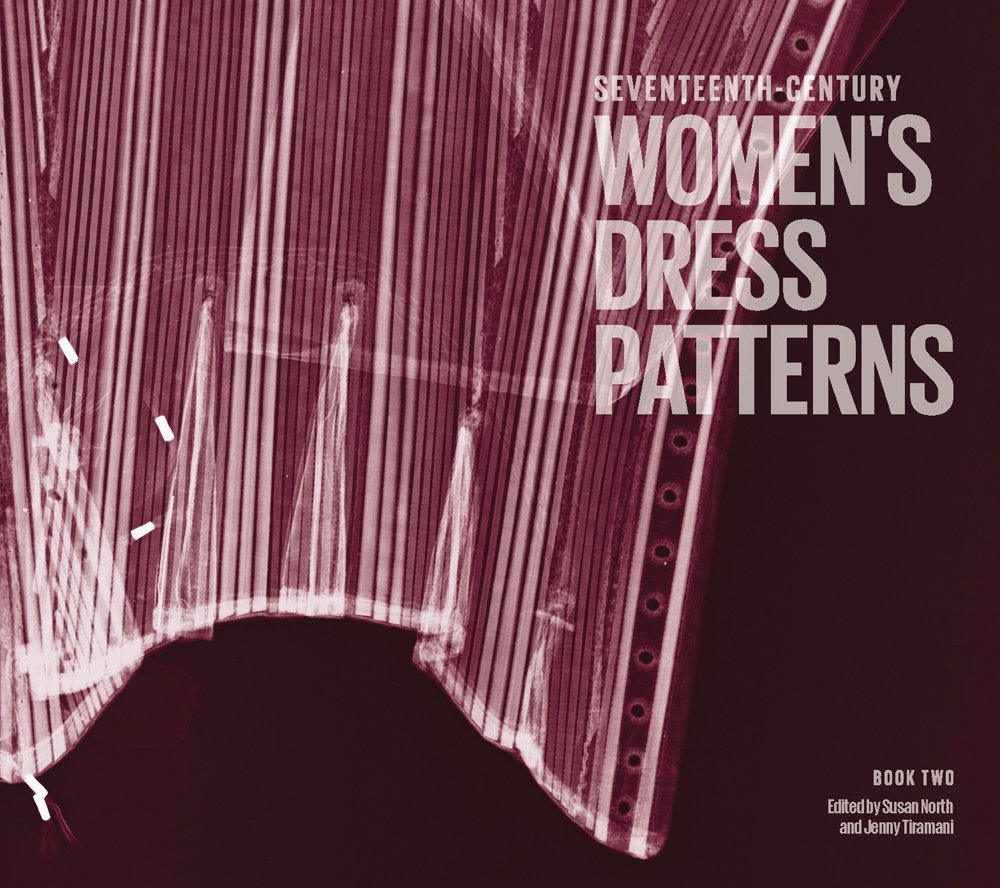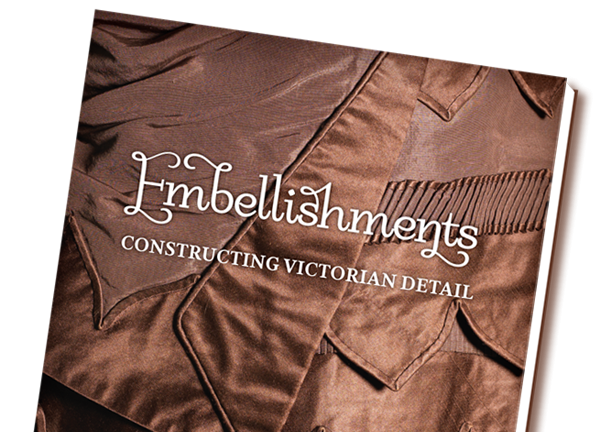Book review: Seventeenth Century Women’s Dress Patterns vol. 2, Jenny Tiramani and Susan North, editors
by Sahrye Cohen, First published for the July/August 2013 issue of Finery

Book two of Seventeenth-Century Women’s Dress Patterns, edited by Susan North and Jenny Tiramani, continues the same meticulous documentation and fantastically detailed x-rays and photographs as book one. This volume contains an open gown, jackets, busks, linen bands and eighteen pages detailing the construction of a pair of 1660-1680s watered silk stays. In addition to being the most anticipated item in the book, stays are also the focus of the introduction to book two.
A short essay discusses the inventory of a late 17th century English staymaker who had a large number of pre-made pairs of bodies in his shop, indicating that many pairs of stays were somewhat ready-made. In addition to the unstitched bodies he also has a varying selection of finished bodies and stomachers for both girls and women amounting to over 200 in the final inventory. A second introductory essay in book two discusses the progression of stays throughout the 17th century by comparing three extant pairs. The cut and method of fastening changes throughout the century as the fashionable shape goes from a straighter silhouette to one that is more curvaceous, particularly around the bust. This most recent curvaceous
pair of stays is the pink watered silk garment detailed in the patterns.

North and Tiramani have arranged the patterns so that books one and two are complementary and not duplicative. In particular, book one does not contain a stays pattern and focuses more on waistcoats and head and body linens. This makes it an excellent resource for costumers making a first foray into the 17th century using their late 16th century or early 18th century stays as a base. A waistcoat, linen band and coif patterned from book one worn with a petticoat will work for many different 17th century impressions.
The first three garments in book two, a velvet gown, and two different linen jackets, are nice garments to include in a larger 17century wardrobe. Developments in costume research, like using xrays for internal construction details, provide additional information for the velvet gown, which is reminiscent of loose gowns that were described in Patterns of Fashion.
The loose linen jackets that are extensively patterned, may be worn in combination with a waistcoat, or alone. These jackets would be an easy choice for costumers who want to make a Cavalier or Pirate outfit. For costuming, the stays pattern from book two will be useful for those who want the perfect mid to late 17th century silhouette and also for developing the inner structure of the fully boned gowns of the second half of the century. The sumptuous satin gowns seen, for instance, on the mistresses of King Charles II, likely had a fully boned lining. Other items in book two are embroidered accessories, such as a stomacher, purse, knife cover and a pincushion that complement the main garments found in both book one and two. Book two also contains three interesting shoe patterns; chopines, an embroidered slipper and a kid shoe, all presented with patterns and detailed photographs.
Book two of Seventeenth-Century Women’s Dress Patterns is an excellent companion volume to book one. It is a fantastic addition to the costume library of those looking for the exact 17th silhouette, and those who want a complete and accurate 17th century wardrobe.


Wear Cot
You are doing a great job! Keep doing, Nice Work and also get information at https://wearcot.com/collections/printed-suits